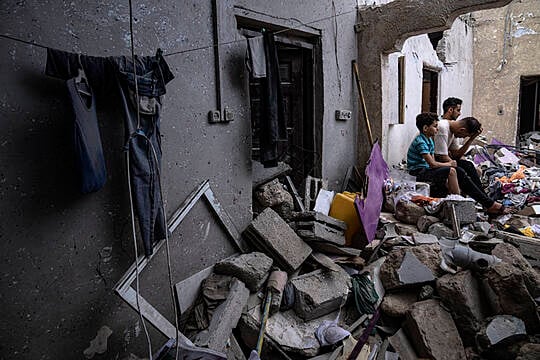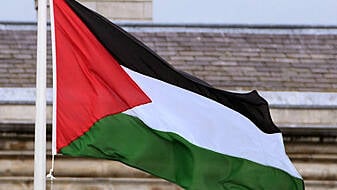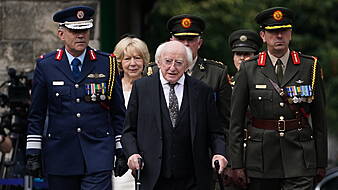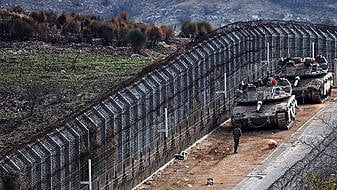Nearly three dozen lorries entered Gaza on Sunday in the largest aid convoy since the war between Israel and Hamas began.
But humanitarian workers said the assistance still fell desperately short of what was needed after thousands of people broke into warehouses to take flour and basic hygiene products.
The Gaza health ministry said the death toll among Palestinians passed 8,000, mostly women and minors, as Israeli tanks and infantry pursued what Israeli Prime Minister Benjamin Netanyahu called a “second stage” in the war ignited by Hamas’ brutal October 7 incursion.
The toll is without precedent in decades of Israeli-Palestinian violence. more than 1,400 people have died on the Israeli side, mainly civilians killed during the initial attack.
Communications were restored to much of Gaza early on Sunday after an Israeli bombardment described by residents as the most intense of the war knocked out most contact late Friday.
The besieged enclave’s 2.3 million people were largely cut off from the world.
Israel has allowed only a small trickle of aid to enter. On Sunday, 33 lorries of aid entered the only border crossing from Egypt, a spokesman at the Rafah crossing, Wael Abo Omar, told The Associated Press.
After visiting the Rafah crossing, the chief prosecutor of the International Criminal Court called the suffering of civilians “profound” and said he had not been able to enter Gaza.
Karim Khan called on Israel to respect international law but stopped short of accusing it of war crimes.
#ICC Prosecutor @KarimKhanQC was at the Rafah Border Crossing between Egypt and the Gaza Strip this weekend.
Watch his remarks on the current situation in Israel and the State of Palestine. 👇 pic.twitter.com/Z22DMLaAv3Advertisement— Int'l Criminal Court (@IntlCrimCourt) October 29, 2023
He called Hamas’ October 7 attack a serious violation of international humanitarian law. “The burden rests with those who aim the gun, missile or rocket in question,” he said.
“These are the most tragic of days,” Mr Khan added.
The court investigates and prosecutes people for war crimes, genocide and crimes against humanity. It has been investigating the actions of Israeli and Palestinian authorities since 2014.
The Israeli military said on Sunday it had struck more than 450 militant targets over the past 24 hours, including Hamas command centres and anti-tank missile launching positions.
It said ground forces killed a number of Hamas militants as they exited one of their extensive network of Gaza tunnels near the Erez crossing, which was the sole pedestrian passageway into Israel before it was destroyed in the fighting.
The Hamas military wing said its militants clashed with Israeli troops who entered the northwest Gaza Strip with small arms and anti-tank missiles. Palestinian militants have continued firing rockets into Israel.
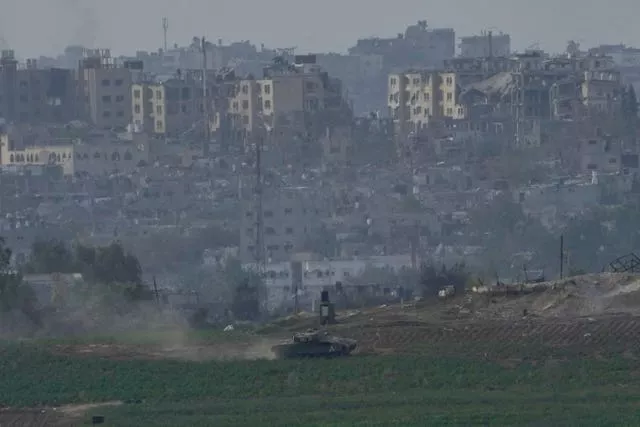
The aid warehouse break-ins were “a worrying sign that civil order is starting to break down after three weeks of war and a tight siege on Gaza,” said Thomas White, Gaza director for the UN agency for Palestinian refugees, known as UNRWA.
“People are scared, frustrated and desperate.”
UNRWA provides basic services to hundreds of thousands of people. Spokeswoman Juliette Touma said the crowds broke into four facilities on Saturday.
She said the warehouses did not contain any fuel, which has been in critically short supply since Israel cut off all shipments after the start of the war. Israel says Hamas would use it for military purposes.
One warehouse held 80 tons of food, the UN World Food Programme said. It emphasised that at least 40 of its trucks need to cross into Gaza daily just to meet growing food needs.
Israeli authorities said on Sunday that they would soon allow more humanitarian aid to enter Gaza.
🔺 As #Gaza conflict grows, hunger intensifies & civilians become desperate in their search for food
🔺 WFP faces communication blackouts, access challenges & fuel shortages, hindering aid delivery
🔺 WFP aims to feed 1M, but increased access & supplies are urgently needed… pic.twitter.com/0SLI30TTUl— World Food Programme (@WFP) October 29, 2023
The head of civil affairs of COGAT, the Israeli defence body responsible for Palestinian civilian affairs, said Israel had established a “humanitarian zone” near the southern city of Khan Younis and recommended that Palestinians flee there.
But Elad Goren provided no details on the exact location or how much aid would be available.
He also said Israel has opened two water lines in southern Gaza within the past week. The AP could not independently verify that either line was functioning.
Meanwhile, crowded hospitals in Gaza came under growing threat.
Residents living near Shifa Hospital, the territory’s largest, said Israeli airstrikes overnight hit near the complex and blocked many roads leading to it. Israel accuses Hamas of having a secret command post beneath the hospital but has not provided much evidence. Hamas denies the allegations.
Tens of thousands of civilians are sheltering in Shifa, which is also packed with wounded patients.
3,195 children killed in #Gaza in just three weeks has surpassed the annual number of children killed across the world's conflict zones since 2019. We are calling for an immediate ceasefire. pic.twitter.com/vrEQ846tPB
— Save the Children International (@save_children) October 29, 2023
“Reaching the hospital has become increasingly difficult,” Mahmoud al-Sawah, who is sheltering in the hospital, said by phone. “It seems they want to cut off the area.”
The Palestinian Red Crescent rescue service said Israeli airstrikes damaged parts of another Gaza City hospital after it received two calls from Israeli authorities on Sunday ordering it to evacuate.
Some windows were blown out, and rooms were covered in debris. The rescue service said airstrikes have hit as close as 50 metres from the Al-Quds Hospital where 14,000 people are sheltering.
Israel ordered the hospital to evacuate more than a week ago, but it and other medical facilities have refused, saying evacuation would mean death for patients on ventilators.
“Under no circumstances, hospitals should be bombed. Under no circumstance, a patient should die in a hospital bed. And it is very difficult to evacuate hospitals,” the director general of the International Committee of the Red Cross, Robert Mardini, told CBS’s Face The Nation.
Israel says most Gaza residents have heeded its orders to flee to the southern part of the besieged territory, but hundreds of thousands remain in the north, in part because Israel has also bombarded targets in so-called safe zones.

An Israeli airstrike hit a two-storey house in Khan Younis on Sunday, killing at least 13 people, including 10 from one family.
The bodies were taken to the nearby Nasser Hospital, according to an AP journalist at the scene.
The military escalation has increased domestic pressure on Israel’s government to secure the release of some 230 hostages seized by Hamas fighters during the October 7 attack.
Hamas says it is ready to release all hostages if Israel releases all of the thousands of Palestinians held in its prisons.
Desperate family members met Mr Netanyahu on Saturday and expressed support for an exchange. Israel has dismissed the Hamas offer.
“If Hamas does not feel military pressure, nothing will move forward,” Israeli defence minister Yoav Gallant told families of the hostages on Sunday in a meeting.

The Israeli military has stopped short of calling its gradually expanding ground operations inside Gaza an all-out invasion.
Casualties on both sides are expected to rise sharply as Israeli forces and Palestinian militants battle in dense residential areas.
Israel says it targets Hamas fighters and infrastructure and that the militants operate among civilians, putting them in danger.
An estimated 1,800 people remain trapped beneath the rubble, according to Gaza’s health ministry, which has said it bases its estimates on distress calls it received.
More than 1.4 million people across Gaza have fled their homes.
The territory’s sole power plant shut down shortly after the war began.
Hospitals are struggling to keep emergency generators running to operate incubators and other life-saving equipment, and UNRWA is trying to keep water pumps and bakeries running.
About 20,000 people were sheltering at Nasser Hospital, emergency director Dr. Mohammed Qandeel said.
“I brought my kids to sleep here,” said one displaced resident who gave her name only as Umm Ahmad.
“I used to be afraid of my kids playing in the sand. Now their hands are dirty with the blood on the floor.”
